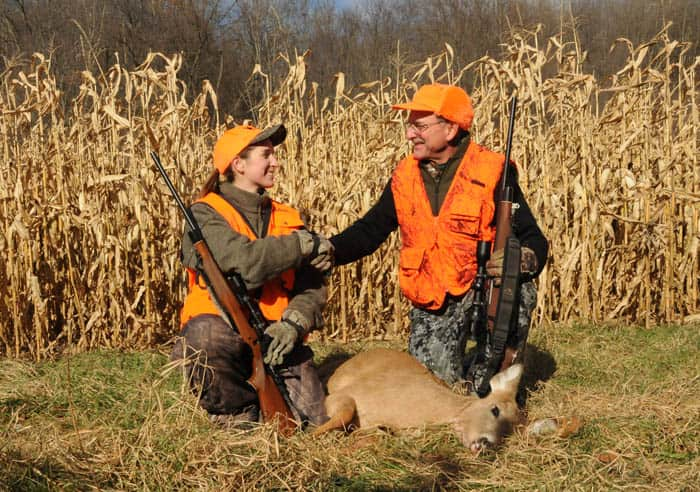Firearms Deer Season Tallies Drop Across Upper Midwest
Patrick Durkin 01.10.14

The deer hunting gods and/or state wildlife agencies didn’t single out individual states for slower firearms deer seasons in late autumn 2013.
No, deer hunting was tougher during November and early December’s firearms seasons across the Upper Midwest, with statewide kills falling short of 2012’s totals in all preliminary figures released by the agencies.
In Wisconsin, for example, the gun-season totals aren’t yet final, but the state’s nine-day firearms season produced 226,582 deer, a seven percent decline from 243,739 in 2012. The buck kill fell to 97,765 bucks, 15 percent lower than 2012.
Even so, the Badger state’s results were apparently tied for the region’s best with Minnesota. Consider:
- In Minnesota, hunters registered 142,927 deer during the 16-day gun season in most of the state and the first two days of the shorter season in its southeastern corner. That’s seven percent below the 153,224 deer registered during the same time in 2012.
- In Illinois, the combined kill from its two firearms seasons was 74,191, a 25 percent decline from 99,546 in 2012.
- In Michigan, the Upper Peninsula’s kill fell an estimated 15 to 20 percent, while the Lower Peninsula’s kill fell about 10 percent. The annual Mackinac Bridge Authority’s survey of deer on hunters’ vehicles showed a 34 percent decline, with 4,207 deer counted in November, down from 6,420 in 2012. Further, the bridge survey was 26 percent below 2011’s count, 5,731.
- In Iowa, the kill during the first of its two gun seasons fell an estimated 18 percent from 2012.
- In Missouri, another of the Midwest’s big whitetail states, the kill was 157,272, a 23 percent decline from 204,654 in 2012.
What’s behind the regional decline? Well, in Wisconsin, the U.P., and northeastern Minnesota, hunters often blame timber wolves for low deer numbers, and black bears for killing fawns. But those large predators aren’t a factor in Iowa, Illinois, Missouri, or southern portions of Michigan’s Lower Peninsula.
So, what plagued the region’s deer hunting if not four-legged predators? Weather during the firearms seasons received much blame. Brutal cold beset Wisconsin’s late-opening gun season (November 23). Kevin Wallenfang, the Wisconsin DNR’s big game ecologist, said hunters responding to the agency’s online wildlife survey during the first half of the season ranked weather as the poorest in the survey’s five-year history.
Iowa reported similar conditions during its early December hunt, as did Illinois during its second season, December 5-8.
In contrast, when Michigan’s gun season opened November 15, hunters in the Lower Peninsula endured unseasonably warm weather the first two days. On day three, winds up to 70 mph blew in, keeping most hunters out of the woods. In the days that followed, many Lower Peninsula hunters stayed home to deal with storm damage and no power to their homes.
Missouri also cited warm, windy weather for its November 16 opener, but a bigger factor was likely widespread deer die-offs caused by epizootic hemorrhagic disease (EHD) in August and September. Illinois and Michigan’s Lower Peninsula also reported localized losses to EHD, which is linked to drought-driven increases in biting midge flies that spread the virus.
Farther north, the long 2012-13 winter and late-April snowstorms likely killed many young deer and old bucks in the northern forests of Michigan, Wisconsin, and Minnesota; and suppressed survival of fawns born to winter-weakened does in May and early June. Wildlife agencies cut or eliminated antlerless quotas across the upper Great Lakes in response, but only time replaces mature bucks.
Sales of hunting licenses, meanwhile, were mostly stable or down only slightly region-wide, so it’s hard to blame the downturn on lower hunting pressure. Wisconsin’s license sales (633,602) were nearly identical to 2012 (633,460), while Michigan reported a two percent increase to about 640,000, and Minnesota a slight decrease to about 460,000. Iowa’s sales were down about seven percent during its first firearms season.
In other words, those who didn’t like the deer hunting in late 2013 shouldn’t feel that they alone suffered. Maybe 2014 will bring better results.

